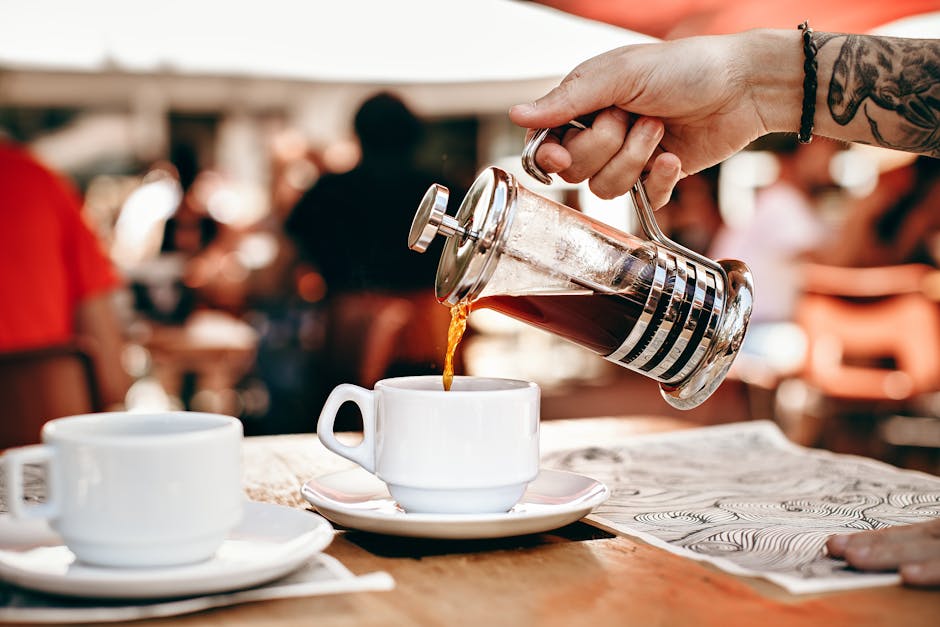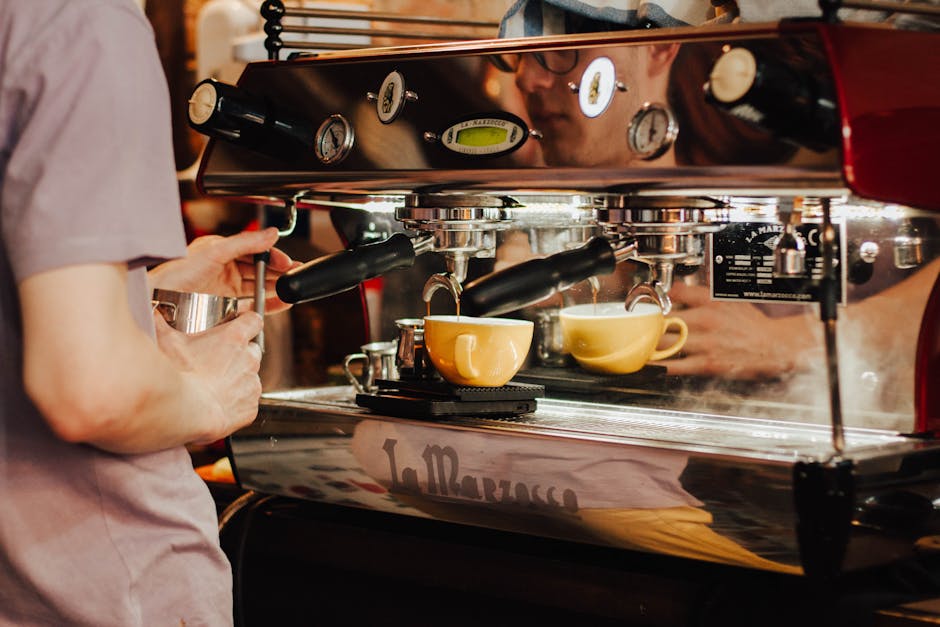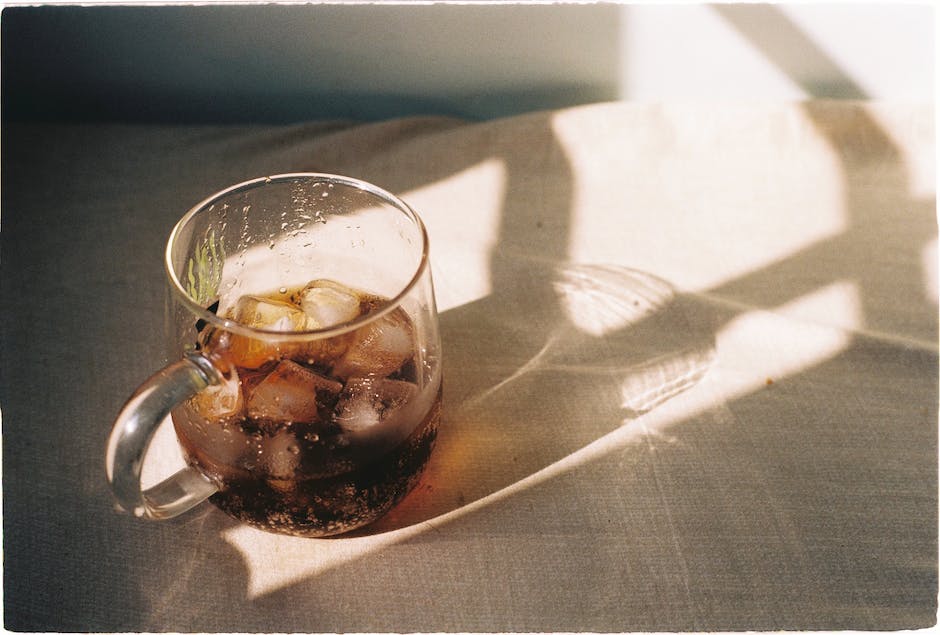From wood to trend – the history of the coffee cup


“In the simple yet elegant form of each coffee cup, centuries of tradition and innovation are reflected – from its woody origins to today’s trendy accessories. The cup’s journey is a story of culture, craftsmanship and the universal pleasure of enjoying a good cup of coffee.”
A cup with history
Long before any cool hipster filled an ink mug with sophisticated coffee creations, the humble coffee cup already had its place in history. We’re talking about the time when every trend was a thousand years away from being Instagram-worthy. Think back to Neolithic times, where early civilizations crafted mugs from wood, clay and metal. These mugs served several purposes, but one thing is certain – someone might have drunk their first cup of coffee from one.
Legendary Kaldi, the Ethiopian goat herder who lived around 850 AD, may have been the first to make coffee from coffee beans. His discovery may have started a coffee culture that then spread across the world.
The potter’s turning hands
When the potter’s wheel came spinning onto the scene around 4500 BC, it had an unexpected effect on the design of coffee cups. It wasn’t just functionality that dictated a cup made of clay. The supply of clay is almost unlimited. And by extension, clay gave rise to ceramics. And that’s where you can really start talking about a coffee cup.
The Minoans of Crete took pottery to a level below the Bronze Age. They created pottery so fine that it would make any modern artist drop their brush.
The aesthetic signature of the Iron Age
Draw a line to the Iron Age and boom, there you have it – coffee cups became a status symbol with aesthetic signatures that would make any minimalist nervously nibble on their interior design catalog. It was no longer just a mug, it was a work of art, designed to be enjoyed with the eyes as much as with the mouth.
The golden age of coffee
The 15th century saw the beginning of what we might call the age of coffee. Now drinking was spreading in earnest. And with each new area came a new style of mug. Persia, the Ottoman Empire, North Africa, to the coffee houses, qahveh khaneh, in the Middle East.
Coffee then swept into Europe in the 16th century, where it was met with an innovation as groundbreaking as the first iPhone: the cup was given a handle.
When the handle took hold of Europe
The handle changed coffee drinking in the 17th century. It was like discovering that your mug can also work as a fashion accessory. It was that touch that allowed you to visit the coffee houses without burning your fingers. Practical, stylish and totally, totally… revolutionary!
The future of mass production
Fast forward to the 18th century, and the industrial revolution shattered the personal touch with the great leap of mass production. A tsunami of coffee cups was created, flowing in all possible and impossible shapes, sizes and decorations.
And then came the 19th century, when every household wanted its own specially designed coffee cup to flaunt. From royal palaces to the bourgeois middle class, the coffee cup was there and it was here to stay.
A mug for every modern home
Each style era was reflected in the curves and contours of the modest coffee cup.
During the tumultuous 20th century, the coffee mug saw the world. And the world saw it. With franchise chains starting to brand their logos on travel mugs and thermos cups with secure lids, the cup became not only a necessary part of everyday life, but also a strong brand.
Coffee is now grown in over 70 countries and the coffee cup has become an icon.
On talk show couches, offices or in trendy cafes, the coffee cup has survived all sorts of fashion trends. Café culture exploded and the coffee cups there were more than just containers; they became the silent witnesses to business ideas, breakthroughs, love stories and the deepest philosophical discussions.
The modern approach to sustainability
The coffee cup also sets the trend when it comes to our environmental awareness. Bamboo, stainless steel and other eco-friendly materials are now taking over the scene. This thing is not a one-hit wonder but has legs to stand on for generations to come. Today’s cups need to be cool, sassy and able to keep from kicking the earth.
Product design these days means not only creating something that looks good, but something that also cares for our planet.
So ditch the disposable cups and get a reusable coffee mug instead. Not only are they smarter for your wallet, but they also high-five the planet. From innovative materials to today’s smart mugs that keep your coffee hot and your conscience cold. This is trendsetting at the sustainability level.
The coffee cup – more than just a container
Tracing a common thread through the history of the coffee cup is like leafing through an illustrated encyclopedia of human creativity. From Kaldi and his dancing goats to King Louis XV’s coffee plantations in Versailles, the cup is a symbol of culture, art and ingenuity.
In today’s society, the coffee cup is a bridge between past and present.
Every time you grab that cup and feel the warmth spreading, remember that you are holding a piece of history. The coffee cup is the bearer of history that has seen empires rise and fall. It has witnessed revolutions. More than just a container – a whole adventure engulfed in ceramics.

FAQ – From wood to trend – the history of the coffee cup
Who was Kaldi and what did he have to do with the coffee?
According to legend, Kaldi was an Ethiopian goat herder who discovered coffee around 850 AD. He observed that his goats became lively after eating coffee berries and decided to try them himself. His discovery laid the foundations for a culture of coffee drinking that later spread across the world.
How have coffee mug designs changed throughout history?
The design of coffee mugs has evolved continuously to reflect the cultural and artistic trends of the eras. From the first simple mugs made of wood, clay or metal to the exquisite ceramics of the Minoans and the handled cups of 17th century Europe, each design phase has had its unique aesthetic and functional signatures.
What role did the potter’s wheel play in the production of coffee cups?
The potter’s wheel, invented around 4500 BC, had a major impact on the production of coffee cups. It allowed for more advanced and homogeneous shapes, improving both the functionality and aesthetics of the coffee cup design. This was significant for the development of the art of pottery, which in turn led to the production of the first true coffee cups.
When did coffee cups in Europe get handles and why was it revolutionary?
In the 17th century, handled coffee cups made their way into Europe, which was a revolutionary change. The handle allowed people to hold hot cups without burning themselves, making coffee drinking more practical and the coffee cup a stylish accessory in the social context of coffee houses.
How do coffee cups contribute to sustainability issues today?
Modern coffee cups reflect increasing environmental awareness through the use of sustainable materials such as bamboo and stainless steel. Reusable cups reduce the environmental impact of single-use plastics and contribute to a more environmentally friendly consumer culture. They represent a trend where product design is not only focused on aesthetics but also on the well-being of the planet.

Photo by Bianca Gasparoto on Pexels
Photo by Andrea Piacquadio on Pexels
Photo by Lisa Fotios on Pexels
Continue reading
-

Pregnant and decaffeinated: safe for you and the baby?
“Decaf during pregnancy: A safe guide for expectant mothers” Decaffeination during pregnancy is an important issue for many. Pregnancy affects the body’s ability to break…
-

Coffee and health: anti-inflammatory or villain?
**Coffee and Inflammation: A Complex Relationship** Coffee is one of the world’s most widely consumed beverages and contains antioxidants that can reduce inflammation and protect…
-

Coffee and weight – are you getting the balance right?
Coffee and weight – Find your edge without tipping the scales Coffee and weight is a hot topic in health. Black coffee, with its low…
-

The truth about decaf – is it really good?
The truth about decaffeinated coffee: Is decaffeinated coffee good for you? Decaffeinated coffee is a healthy option for those who want to avoid the negative…
-

Coffee acidity: health and taste perception
The acidity of the coffee is influenced by its pH value, which is between 4.85 and 5.10. Is coffee sour? Yes, and this is due…
-

Pre-exercise coffee – does performance increase with each cup?
Drinking coffee before exercise can improve both strength and endurance, thanks to the stimulating effects of caffeine on the central nervous system. For best results,…
-

Coffee and antioxidants: your healthy cup?
**Coffee and antioxidants: a healthy cup Coffee is one of the major sources of antioxidants in Western diets, which can help reduce the risk of…
-

Turmeric in coffee – a health boost in your cup
Turmeric in coffee has become a popular trend among health enthusiasts thanks to its anti-inflammatory and antioxidant properties. Adding turmeric to your coffee can improve…
-

Roast for body in the coffee
Body in coffee refers to the fullness and mouthfeel of the coffee. It is influenced by brewing methods such as French press and espresso, as…
-

The role of coffee in the quest for a longer life
Coffee is a popular morning ritual that not only increases alertness but also contributes to a longer life. Studies show that coffee, rich in antioxidants,…
-

Coffee and health: upgrading your coffee with superfoods
**Coffee and Health: Upgrade your coffee with superfoods** Give your coffee a health boost by adding superfoods such as cinnamon, ginger, mushrooms, turmeric, maca and…
-

Is coffee dehydrating or hydrating?
**Is coffee dehydrating or hydrating? Coffee is one of the world’s most loved drinks, but is it dehydrating? Research shows that moderate coffee consumption (1-2…
-

Enjoy and feel better: 9 unexpected benefits of coffee
**Your health in a coffee cup: Benefits of coffee** Coffee, a global favorite beverage, offers many health benefits that are often overlooked. In addition to…
-

Taste guide: Detecting roasting defects in your coffee cup
Detect roasting defects in the coffee cup and improve the taste experience of the coffee. Learn to identify common defects such as underdevelopment, baked taste,…
-

The home roaster’s guide to the right green coffee
Discover the adventure of green coffee and learn how to roast at home with our comprehensive guide to buying the right green coffee. Understand the…
-

All about how coffee is harvested
A journey through the coffee harvest describes in detail how coffee is harvested, from ripe coffee berries to finished beverage. Harvesting is mainly done by…
-

Exploring third wave coffee
**From the origin of the bean to your coffee barrel: A journey with third wave coffee** The coffee industry is a global giant, covering everything…
-

Coffee with balance: decaf vs low-caf
Low-caf coffee offers a balanced solution for coffee lovers who want to avoid the negative effects of caffeine. While traditional coffee and decaf often have…
-

How to turn coffee beans into decaffeinated coffee
### How to turn coffee beans into decaffeinated coffee Decaffeinated coffee, or decaffeinated coffee, removes the majority of caffeine from the beans to avoid negative…
-

Refine your brewing art by blooming your pour over coffee
Optimize the taste of your coffee with the art of bloom pour over coffee. Flowering of coffee is a crucial step to release gases and…
-

Create a unique brand for your café – here’s how!
Creating a strong café brand means defining your ‘why’ and mission to stand out from the crowd. By integrating core values like sustainability and community…
-

Should I use different coffee filters for different roasting profiles?
Discover how coffee filters affect the taste experience! Using the right coffee filter is essential to bring out the unique flavors of each coffee variety.…
-

How to make an espresso martini at home
“Create the perfect espresso martini at home with simple ingredients like vodka, coffee liqueur, fresh espresso and simple syrup. Rooted in 1980s London, this classic…
-

Lungo: when espresso takes a bigger leap
Lungo is a coffee drink that is gaining ground in Sweden, a milder espresso with extended brewing time that provides a larger amount of coffee…
-

The charms of the Perculator – a coffee experience like no other
Experience the rich flavor of percolator coffee, a traditional brewing method that offers depth and complexity. The perculator is quick and easy, perfect for busy…
-

Do you know the coffee berry?
Discover the importance of coffee berries in the coffee flavor journey, from lush plantations to your cup. Learn about the different layers of the berry,…
-

Headache from coffee: 6 unexpected reasons
Discover the causes of coffee headaches, from caffeine withdrawal to overdose and caffeine allergy. Coffee can cause both concentration and headaches, with withdrawal symptoms and…
-

How to use different cups for different coffees
Discover how cups for coffee can change your taste experience. Research shows that the shape of the cup affects the aroma, sweetness and acidity of…
-

Arabica coffee beans – a world of flavor variations
Arabica coffee beans offer coffee lovers a wealth of flavors thanks to its diverse varieties such as Bourbon, Typica and Geisha. These beans, which dominate…
-

Flavor development during roasting: the magic of the griddle effect
The grinding effect is central to the transformation of the coffee bean during roasting, creating hundreds of aroma compounds that make the coffee rich and…
-

Top tips for making French press coffee
Discover the art of brewing perfect French press coffee by selecting fresh coffee beans, achieving the ideal grind and balancing the coffee-water ratio for a…
-

Attracting more café guests – your guide to a vibrant meeting place
Welcome all café guests to a place where the details create a unique atmosphere. To successfully attract visitors, cafés should strengthen their digital presence and…
-

Coffee giant Brazil: a deep dive into the kaleidoscope of culture
Brazil is not only known for its culture of music and carnival, but it is also a global coffee giant whose coffee traditions go back…
-

Clean your coffee grinder like a pro – for flavor
Regular cleaning of the coffee grinder is essential for an optimal coffee experience. An unclean grinder negatively affects the taste through the accumulation of old…
-

Flat white – more than just milk and coffee
More than just milk and coffee, flat white is a global coffee experience that originated in Australia and New Zealand, and has captured the hearts…
-

Ristretto – Italy’s flavorful little guy
In Italy, ristretto is more than just coffee; it is a concentrated pleasure and part of the culture. This intense espresso variant is characterized by…
-

Storing coffee beans properly: guide and tips
Learn how to store coffee beans optimally to preserve flavor and freshness. Avoid air, moisture, heat and light with airtight, dark containers and the right…
-

Growing coffee in Uganda: one bean’s journey to perfection
Uganda, a leading coffee producer, offers a wealth of flavors from the nutrient-rich red soil. The country is known for its Arabica and Robusta coffees,…
-

A deep dive into the world’s oldest brewing method
Discover the ancient art of coffee, where traditional tools like the cezve and ibrik represent the oldest brewing method for coffee, a deep-rooted tradition celebrated…
-

How to make cold brew coffee at home
Enjoy a flavorful coffee experience with cold brew coffee, a popular brewing method that produces a mild and low-acid beverage, perfect for hot days. Unlike…
